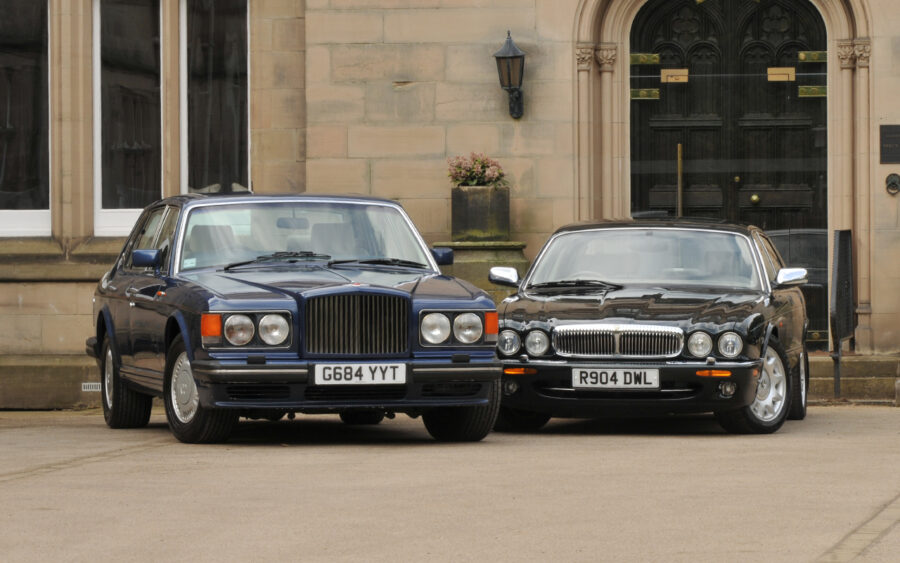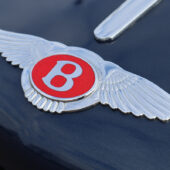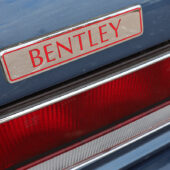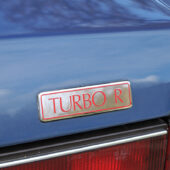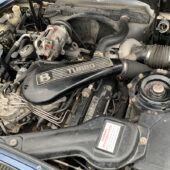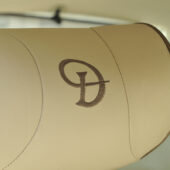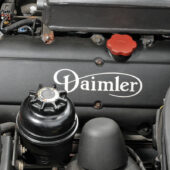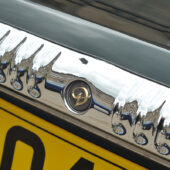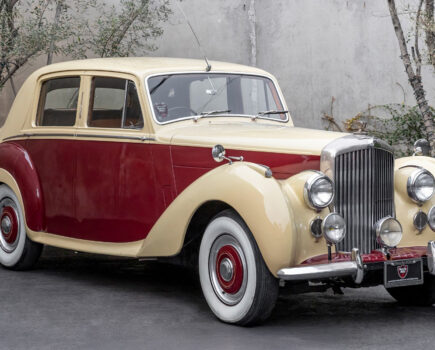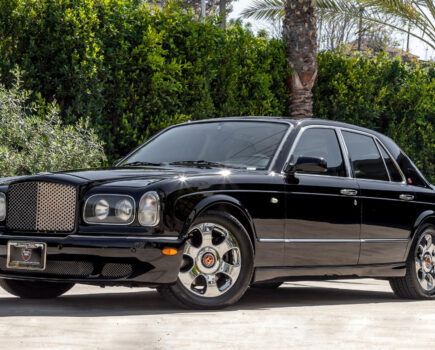The Bentley Turbo R and Daimler Super V8 are among the most desirable fast British luxury saloons. But which is best?
Words and images: Paul Wager
History has taught us that if the British motor industry has one strength, it’s creating success from unlikely origins. Prime examples include the Metro-related MGF, Range Rover-derived Land Rover Discovery, the great Rovers-based MGs in the early 2000s, and countless others. And so it is with the pair of British cars we have here, each of which adopted an ageing design and created a car that went on to win universal praise.
In the case of the Bentley, no vehicle this large and this heavy has any logical right to offer such cross-country pace, and yet the basic design underpinning the unlikely hot rod stems from the 1965 Silver Shadow. The Daimler, meanwhile, was derived from the Jaguar XJ40, which may have appeared as late as 1986 but was actually in development as far back as the 1970s.
Smaller and lighter than the Bentley, the Daimler Super V8 is still a big car by European standards, offering the impressive combination of performance and refinement that was for so long a trait of all Jaguar-derived offerings. On the face of it then, both of these cars appear quite similar – but in practice they’re really very different, as we found out when we attempted to choose a winner.
Bentley Turbo R
Before going any further, it’s worth addressing the elephant in the room: if you have your heart set on a Turbo R, then nothing else will do. You might nod appreciatively at the ‘blown’ Daimler but it’s unlikely to steer you from your goal. And it’s easy to understand why you might have got to that point. Quite simply, there’s nothing else like the Bentley Turbo R; nothing else that offers the same combination of bulk, performance and hand-crafted charm.
Like all the best cars though, it very nearly didn’t happen. What would eventually reach production as the Mulsanne Turbo began as a side project by then Rolls-Royce boss, David Plastow. He wanted to embrace new technologies and, aware that the firm’s long-running V8 would need a performance boost to remain competitive throughout the ’80s, hit upon the idea of turbocharging. Forced induction was still a young science in those days and the development team was reluctant to share his enthusiasm. However, with the words “Go on, let’s have some fun”, urban rumour tells us that Plastow procured a tired development hack Silver Shadow and sent it off to race outfit Broadspeed. When the car returned, it had a big Garrett blower strapped to the side of the block and a modest 10% more horsepower… but a massive 50% more torque.

All who drove the manic Silver Shadow found it great fun, if a little crude, and the idea was subsequently refined for production, via at least one turbocharged Camargue. In something of a masterstroke, the decision was taken to offer the new car under the Bentley brand rather than Rolls-Royce, perhaps as a nod to its sporting heritage but also for the more prosaic reason that the word ‘turbo’ would sit uneasily with the traditionally conservative Rolls-Royce buyer.
The Mulsanne Turbo was launched at the Geneva Salon of 1982 and boasted the 298bhp engine (the ‘adequate’ power output having been revealed by German regulations), a red Turbo boot badge, body-coloured grille and… well that was it. No wonder road testers found the cars alarming and exhilarating in equal measure, the reason being that Rolls-Royce – having split from its aerospace partner early the previous decade – simply didn’t have the resources to develop the new car and engine at the same time.
The Mulsanne Turbo’s unruly handling was addressed in 1985 when the Turbo R was introduced, that ‘R’ allegedly signifying Roadholding. The legend goes that the chassis engineers showed their proposed suspension changes to Rolls-Royce engineering chief Mike Dunn, and were told in no uncertain terms to go away and make it twice as stiff again… which they duly did. The result was a 100% stiffer front anti-roll bar, a 60% uprated rear bar, firmer dampers with uprated rebound, a 50% firmer power steering set-up and a Panhard rod to reduce sideways movement of the rear subframe. To these changes were added lightweight 15-inch alloy wheels shod with 275/55 tyres and a deeper front spoiler.
The result transformed the car, and road testers of the day never failed to be amazed by the way in which the big saloon could be flung around like a GTI. The popularity of the Turbo R turned Bentley’s fortunes around, with the marque suddenly attracting a much-needed younger buyer. It proved so successful that Bentley was outselling its Rolls-Royce sister marque by 1991. Indeed, the attractiveness of the brand in the late 1990s to current owners Volkswagen can be directly attributed to the success of the Turbo R.
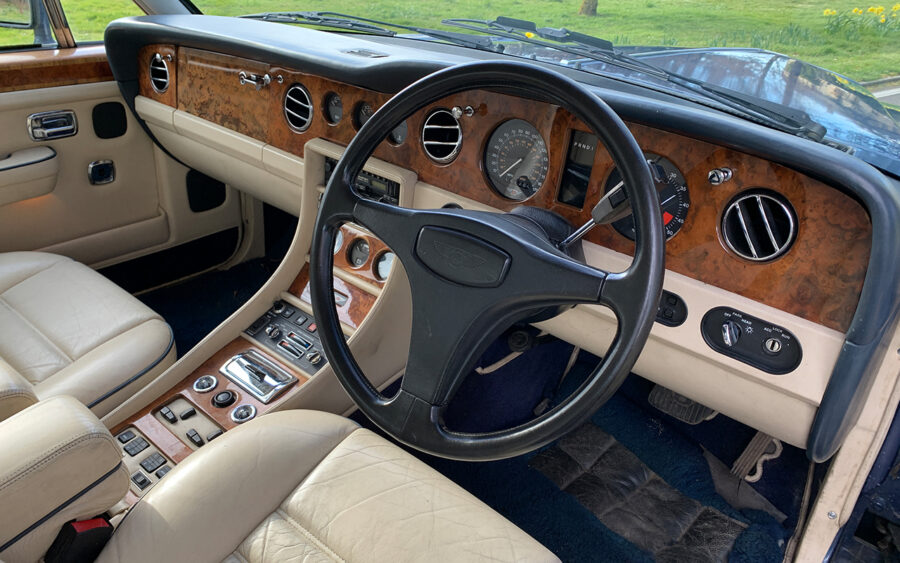
The popularity of the ‘blown’ Bentley helped to fund more ongoing development than had traditionally been given to Crewe products, with the Turbo R being incrementally improved right through to the end of its career. In 1988, the troublesome four-barrel Solex carburettor was replaced by Bosch fuel-injection, and in 1989 the cars gained adaptive damping to good effect, with a four-speed automatic from 1990 and a chargecooler in ’96. Power outputs rose too, with the final Turbo RT packing an outrageous 400bhp and an even mightier 590lb.ft. of torque.
It’s a 1990 example we have here, our own project car no less, which means it comes with the convenience of fuel-injection, ABS brakes and Active Ride. When it left Stratstone of Wilmslow, it cost its first owner a cool £101,000, putting it a clear head and shoulders ahead of any Daimler. But today you can acquire a Turbo R for anything from £8000 upwards… or even less if you fancy taking on a project.
Be warned though, as these aren’t cars you can run on a shoestring – and one of the biggest costs will be tyres. Essentially, there’s no other vehicle that weighs 2.5 tonnes, runs a 15-inch wheel and can crest 140mph, which explains why there’s only one tyre choice: the Avon CR27, developed specially for the car back in the day. Not only do they come in at anywhere from £300-£400 per corner, they’re made infrequently in small batches, and so a Turbo R on balding rubber is going to spring a big bill before you even take your first drive.
It’s not all gloom, though. Parts support is excellent (even if some of the low-volume detail items are more expensive than you’d find with a Jaguar) and the locomotive-style engineering is relatively simple. Provided you’re happy to get stuck in and you have sufficiently beefy jacks and stands, there’s a surprising amount you can do yourself. The Citroën-style high-pressure hydraulic system that powers the brakes and self-levelling rear, however, is best left to the experts.
As for the driving experience, it’s as unique as you might expect. You sit up high, looking down on regular cars (although it’s not quite as lofty as something like a Range Rover), while on our 1990-spec car there’s the familiar column-mounted gearshift selector. Bury the throttle and the Turbo R gathers speed impressively quickly, with commendably little fuss. In truth, the V8 isn’t as muted as legend would have you believe, and its woofling exhaust note is always present, with a slight whistle as the boost builds and an invisible giant hand pushes you back into the seat. It’s not a high-revving engine by any means and is redlined at 4500rpm, underlining the fact that what gives the big Bentley its pace is the low-speed torque.
It’s addictive stuff, yet the car remains so composed under hard acceleration that passengers seldom even look up from poking at their iPhones, even under full bore standing starts. Part of the reason for this must be the adaptive ride, which takes signals from brake lights, throttle, steering input and accelerometers to evaluate driving style and adjust the dampers accordingly. Although it’s very much an analogue set-up rather than the electronic systems on modern cars, it’s effective when working properly and doesn’t take more than a few seconds of spirited driving to stiffen up noticeably.

All good then? Well yes, if outlandish performance is your thing. But these aren’t always easy cars to own, although to be fair most of the downsides are of a practical nature. The first question on most people’s minds will be the fuel economy, although with moderate driving on longer trips it’s not so bad; budget on just over 20mpg on a good day (significantly better than you might expect from something like a V12 Jaguar) but be aware that this will sink to single figures in urban driving.
The other big issue is the car’s size, which means it won’t fit into the average domestic garage and these cars really need to be kept under cover. Things like window seals tend to shrink and perish over time, and keeping a Bentley of this age dry and well ventilated will simply make it a more enjoyable thing to own.
If you’ve got the space, then with the help of a local Rolls-Royce/Bentley specialist, the right car might well be a straightforward ownership prospect. And as I suggested at the start, if you’ve already set you sights on a Turbo R, then nothing else will suffice. But just how close does the range-topping Daimler come to beating it?
Daimler Super V8
The badge may have ended its days on the back of optioned-up Jaguars, but the Daimler marque (as distinct from Daimler-Benz) has an even more illustrious heritage than Bentley, having been the choice of royalty long before Rolls-Royce stole the crown. By the late 1950s, however, BSA-owned Daimler was in trouble as sales of its cars declined. Jaguar’s William Lyons saw more value in the company’s production facilities than its product range, and so swooped in to acquire Daimler in 1960, keeping quiet until the last moment, which meant the first that fellow Jaguar executives heard of it was on the morning news.
Production of Daimler-designed cars ended shortly afterwards, with the SP250 sports car failing to reach sales targets even after a hasty Jaguar redesign of its famously flexible chassis. The badge did live on, however, as a Daimler V8-engined version of the Jaguar Mk2 and later as a means of identifying the top trim level of the new XJ saloon. A Daimler version would remain at the top of the XJ range well into the new millennium, disappearing only for the final X351 model.
For this twin test we have the X308 generation of XJ, which was essentially the result of fitting Jaguar’s new AJ-V8 engine into the older X300 bodyshell – itself the result of giving the previous XJ40 a top-and-tail makeover. The final car to be developed by an independent Jaguar before its takeover by Ford, the XJ40 of 1986 was the first all-new XJ since the original had appeared 18 years earlier, and was itself eventually due for replacement by an all-new design when Ford formally took over at the start of 1990.
However, the pressing need to upgrade production facilities took priority and a comprehensive re-engineering exercise was performed instead, followed by an extensive facelift that effectively grafted a retro-style nose and tail on to the XJ40 centre section. The resulting X300 was the car that many thought the XJ40 could – or should – have been from the start, giving Jaguar a renewed impetus in the market against the German rivals.
One of the highlights of the X300 was the XJR, which unlike the largely cosmetic XJR-badged XJ40 models, offered a real performance boost courtesy of supercharging. Despite Jaguar product planners thinking the XJR would be a small-selling niche product, it proved to be surprisingly popular, so when the V8 engines were fitted to the X300 to create the X308, an XJR remained in the range. This time however, the 360bhp supercharged engine was also offered in less-shouty Daimler form, without the firm suspension and sporting trim details. The result was something very different, offering truly rapid pace yet with a composure offered by no other car – and yes, that includes the Bentley.
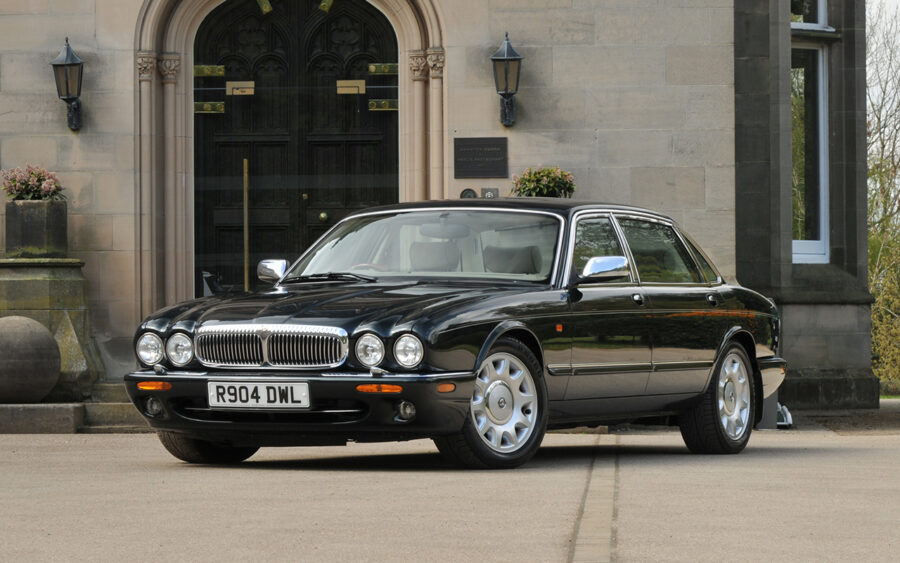
Stepping from the Bentley into Chris Mansell’s truly immaculate Daimler Super V8, the relative youth of the design is starkly obvious. The X308 facelift banished all visible traces of XJ40, ushering in a new, higher-quality interior that in Daimler trim is no less lavishly finished than the Bentley. Yes, it’s more of a factory product against the Bentley’s hand-built craftsmanship, but this brings with it advantages in terms of precision of fit and finish, with all the modern convenience kit nicely integrated.
Like the Bentley, the supercharged Daimler was offered only in automatic form, with the signature J-gate Jaguar shifter allowing some degree of manual control allied to a five-speed Mercedes-Benz ’box. Twist the key in the Daimler and the first impression is how quiet the engine is. There’s always some mechanical and exhaust noise evident with the Turbo R, but at idle with the door closed the Daimler needs a second glance at the dashboard to verify whether it’s running or not.
On the road the Daimler Super V8 offers no less muscular performance than the Bentley – in fact it’s noticeably faster – but delivers it in a very different way. Contrary to conventional logic, the turbocharged Crewe V8 relies on low-speed torque, whereas the supercharged Jaguar unit is more free-revving, with just a hint of blower whine as speed builds. This is a deceptively rapid machine and in a straight line there’s really not much to touch it. The official figures give it just 5.4 seconds to sprint to 60mph; and although we didn’t want to treat Chris’s superb survivor to that kind of treatment, it feels well up to the task of despatching contemporary Porsches.
It’s also incredibly refined, stepping through its five speeds unobtrusively even under hard throttle and, like the Bentley, delivering its performance without disturbing passengers. With only the fluted grille and different wheels to give the game away from the outside, it looks at a glance like a regular XJ8 and in that respect is the ultimate Q-car – certainly much more so than the physically imposing Bentley.
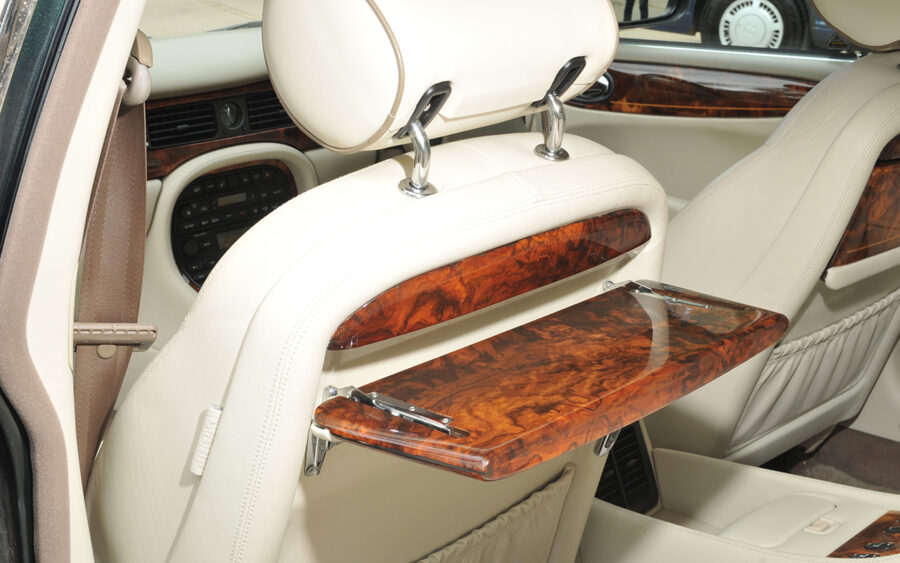
The ride/handling balance has always been a traditional Jaguar strength and the Daimler Super V8 benefits from this, offering a more supple ride than the Bentley, yet with the electronically controlled adaptive dampers giving it similar cornering capability. Granted, the suspension doesn’t have the bulk of the Bentley to deal with, but the age of the bodyshell design is obvious from the lack of the shuddering over potholes that afflicts the Bentley’s structure.
As with the Bentley, it’s possible to achieve remarkably rapid cross-country progress in the Daimler Super V8. But somehow it seems less outrageous from the newer car, which offers a more conventional, lower-set driving position and simply feels so much more manageable – although in reality it’s only 10cm narrower and 20cm shorter.
Parts support is on a par with the Bentley, while the Daimler’s Jaguar origins mean most of it is affordable, too. The cars are also well served by independent specialists who really know their way around them. But perhaps the greatest advantage the Daimler has is the practical one: it may only be marginally slimmer than the Bentley but that’s enough to allow it to live in a regular domestic garage, while its sub-1800kg kerb weight makes it much more manageable for the DIY-minded owner.
Bentley Turbo R vs Daimler Super V8: our verdict
Having lived with our Bentley for six months and several thousand miles, I’ve come to love its combination of performance and ‘olde worlde’ charm. But I’ve never encountered a Jaguar model I didn’t like… and let’s face it, the Daimler is a Jaguar in all but name.
If pressed to choose, it would be tempting to pick the Daimler Super V8. It does everything the Bentley does (arguably even better) and in a package that’s potentially easier to live with. As I said at the beginning though, if you want a Turbo R then there’s nothing else like it. This is a hand-built, thoroughbred machine that is quite simply unique. It is a fine choice, as well as one of the most historically significant Bentleys of the last four decades.

